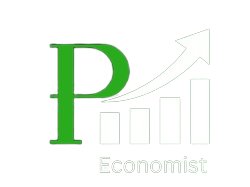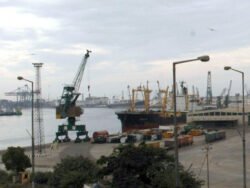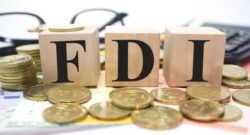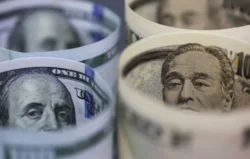Lessons for National Development: Chinese Economic Reforms

Hassan Abdullah Rasool
An area that witnessed the rise and fall of numerous dynasties, later transitioning to the Republic of China in 1912 and then to the People’s Republic of China in 1949. Amidst the turmoil of war with Japan, China faced severe challenges: agriculture and factories lay in ruin, food production descends rapidly and numberless of other issues emerged as aftermaths of conflict. The question of leadership loomed large, until the 1949 revolution brought clarity, paving the way for the Communist Party of China to assume control in Beijing. The new leadership faced pressing concerns such as rampant inflation, urban unemployment, food shortages, and skyrocketing prices. Addressing these issues were important to ensuring social stability. To tackle these challenges, the leadership crafted and executed policies meticulously, aiming to stabilize the economy and alleviate social woes, thereby earning the trust of the populace. From 1950 to 1978, China’s GDP grew at a modest rate of only 3 percent annually, primarily fueled by government investments and advancements in education. However, disruptions such as famine in the late 1950s and the Cultural Revolution in the 1960s significantly halted economic progress.
In addition to wars and revolutions, China’s economy also suffered interruptions due to its imperial political institutions, which prioritized the interests of elites. When such circumstances arise, leadership often places the country’s progress on the back burner. This resulted in chaos among the common people, who found it difficult to trust their leaders.
Mao Zedong, the founder of the People’s Republic of China, outlined three primary objectives: achieving national unity, transforming outdated social and economic structures and securing independence from foreign interference. He implemented various measures to exert control over all aspects of Chinese society, nurture stability, cultivating public trust in government and advancing China’s economic progress.
In 1953, China introduced the First Year Plan (FYP) to follow Soviet economic model, with the USSR as the sole communist economic system offering technical aid, China prioritized heavy industry development due to its absence domestically. Under the FYP, nationalization of industries and large-scale commercial enterprises occurred alongside the eradication of private property. To address peasant concerns, semi-socialist cooperatives were established, compensating members based on their work. Land reforms were followed by the introduction of a national currency and centralized budget control. Mao Zedong’s leadership saw rigorous penalties for corruption, aiming to bridge the wealth gap. Subsequently, focus shifted to improving living standards and equalizing income inequalities. Military production surged amid concerns of an impending world war. Mao passed away on September 9th, 1976. Zhou Enlai was a moderate leader, he was very much in favour of these reforms than Mao and he felt this thing that China will progress by the ‘Four Modernization’ Policy. He was very much missed by the Chinese people once he died in January 1976.
Deng Xiaoping emerged as a prominent leader in 1950s-60s, but faced persecution during the Cultural Revolution. After Mao’s death, he headed China’s transition, prioritizing economic reforms. Deng’s “Four Modernizations” focused on industry, agriculture, defense, and technology. He replaced Mao’s communal farming with the Household Responsibility System, promoting private enterprise. Deng’s shift to capitalist policies fueled China’s economic growth. He also advocated for orderly leadership transitions, setting a precedent upon his retirement.
In 1978, Deng Xiaoping launched economic reforms in China, aiming to modernize and open up the country. These changes, including increased international engagement, defied previous expectations of a closed-off China. Deng emphasized meritocracy and encouraged advancements in academia and science to drive economic growth and enhance China’s global stature. These reforms quickly gained popularity and were recognized as a pivotal turning point in China’s development by both the public and Communist Party leaders.
All leadership on one page, favored initiating reforms in agriculture, recognizing its pivotal role as the base of the national economy. Emphasis was placed on the significance of the rule of law, decentralization, and resource ownership, principles later extended to the entire economic framework. Deng also introduced economic incentives tied to productivity, shifting focus from need-based rewards to performance-based compensation. The leadership underlined China’s economic development, its future international stature, and the imperative of maintaining political stability under sustained leadership. Deng dismissed past ideological and political debates as unproductive, advocating a shift in societal focus from politics to economics to realize tangible economic progress in China.
Private enterprise should operate independently of the government to guarantee economic decisions are based on merit rather than politics. Deng Xiaoping emphasized professionalism and individual talent, advocating for strong CCP leadership to drive economic reforms. Jiang Zemin and Hu Jintao continued these reforms, focusing on adapting to changing economic conditions and promoting scientific progress. Zemin also introduced measures to control population growth and address environmental challenges, recognizing the need for sustainable development.
In 2002, the 16th CCP conference, led by Zemin, focused on uplifting living standards, improving the market system, expanding overseas trade, and addressing income inequality through payment reforms. In 2007, under Hu Jintao’s leadership, the 17th conference emphasized economic achievements and support for strengthening China’s socialist market economy, with a focus on addressing various concerns raised previously. He emphasized the critical role of energy in China and the urgent need to address environmental challenges facing the nation.
Since 1979, Chinese economic reforms have continued, even under Xi Jinping’s leadership. The deliberate slowdown in economic growth reflects a shift to a mixed economy model. Xi Jinping prioritizes technological advancement, seen in China’s leadership in solar technology and aerospace engineering. The “Made In China 2025” initiative aims for technological innovation and quality over quantity. China’s reform agenda from 2013 persists, with a focus on making the Yuan a global reserve currency. “Made in China 2025” seeks to modernize manufacturing, empowering firms to set technological standards, with plans to establish 40 innovation centers by 2025.
Last but not the least China is competing with United States in artificial intelligence, one can draw a simple conclusion how China became hero from zero, all the leaders were having differences but their main goal remained same to make China great, why Pakistan cannot follow Chinese model, why our leaders don’t understand that their main goal is to make Pakistan great not just to full fill 5 years tenure, but who will answer this question, let’s wait or find the person.





